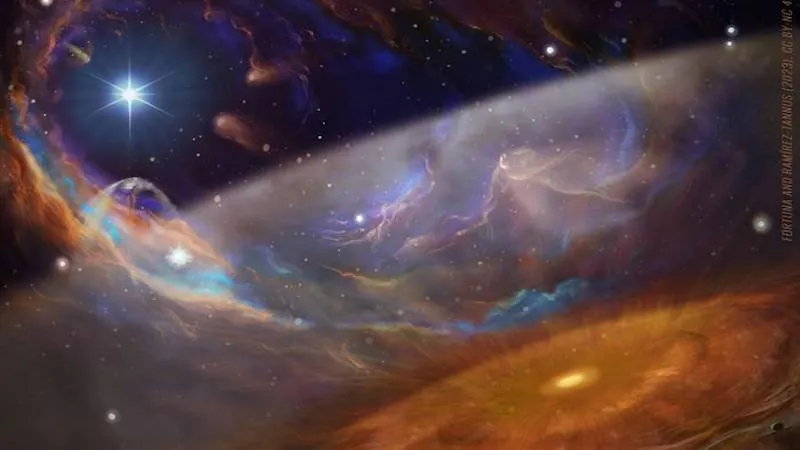
Scientists Discover How Planets Can Form Amid High UV Radiation
2025-06-01
Author: Li
Unlocking the Secrets of Planetary Birth in Extreme Conditions
A groundbreaking study led by Penn State astronomers reveals that the essential building blocks for planets can thrive even in environments bombarded by intense ultraviolet (UV) radiation. This research, harnessing the advanced capabilities of NASA's James Webb Space Telescope (JWST), focuses on a protoplanetary disk—the swirling dust and gas around a young star that can evolve into a new planetary system.
Exploring Protoplanetary Disks Near Massive Stars
The research team investigated a young solar-mass star named XUE 1, located about 5,500 light-years away in the spectacular Lobster Nebula (NGC 6357). This region is not just stunning; it's also home to over 20 massive stars, including two of the largest in our galaxy, which emit copious amounts of UV radiation. These conditions pose significant challenges for the formation of planets, as such radiation could disrupt the integrity of surrounding protoplanetary disks.
Revealing Molecular Components Essential for Planet Formation
Using JWST's insights and complex astrochemical models, researchers identified the composition of dust grains in XUE 1's protoplanetary disk, which could coalesce to form up to 10 planets, each weighing about as much as Mercury. The team also cataloged various molecules such as water vapor and carbon monoxide, which play crucial roles in developing the atmospheres of emerging celestial bodies.


 Brasil (PT)
Brasil (PT)
 Canada (EN)
Canada (EN)
 Chile (ES)
Chile (ES)
 Česko (CS)
Česko (CS)
 대한민국 (KO)
대한민국 (KO)
 España (ES)
España (ES)
 France (FR)
France (FR)
 Hong Kong (EN)
Hong Kong (EN)
 Italia (IT)
Italia (IT)
 日本 (JA)
日本 (JA)
 Magyarország (HU)
Magyarország (HU)
 Norge (NO)
Norge (NO)
 Polska (PL)
Polska (PL)
 Schweiz (DE)
Schweiz (DE)
 Singapore (EN)
Singapore (EN)
 Sverige (SV)
Sverige (SV)
 Suomi (FI)
Suomi (FI)
 Türkiye (TR)
Türkiye (TR)
 الإمارات العربية المتحدة (AR)
الإمارات العربية المتحدة (AR)